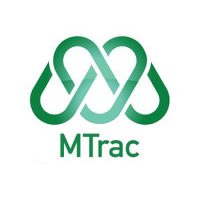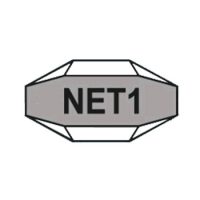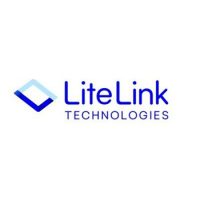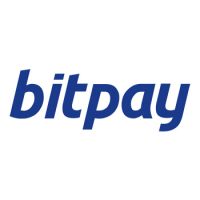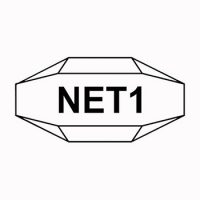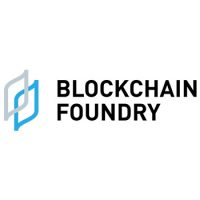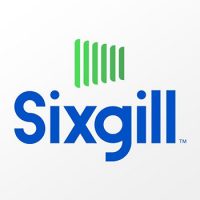Blockchain Press Releases
5G Infrastructure Market size to grow by USD 95.89 billion from 2023 to 2030; Demand for improving the internet speed & bandwidth to boost the market growth – Facts & Factor
NEW YORK, June 28, 2023 /PRNewswire/ — As per Facts and Factors study, the global 5G infrastructure market size was evaluated at $9.2 billion in 2022 and is slated to hit $95.89 billion by the end of 2030 with a CAGR of nearly 35% between 2023 and 2030.
Report Link with All Related Graphs & Charts: https://www.fnfresearch.com/5g-infrastructure-market
5G Infrastructure Market: Overview
5G infrastructure is referred to as a network of small & macro-base stations possessing edge computing capabilities. Moreover, it comprises standalone 5G infrastructures, which have their cloud network connecting 5G new radio technology and non-standalone infrastructure.
Key components of 5G infrastructure include RAN towers and 5G small cell infrastructure. Furthermore, 5G infrastructure provides low latency coverage for big data streams powering IoT equipment and semi-autonomous vehicles.
Get a Free Sample Report with All Related Graphs & Charts (with COVID 19 Impact Analysis): https://www.fnfresearch.com/sample/5g-infrastructure-market
Key Insights:
- As per the analysis shared by our research analyst, the global 5G infrastructure market is projected to expand annually at the annual growth rate of around 35% over the forecast timespan (2023-2030)
- In terms of revenue, the global 5G infrastructure market size was evaluated at nearly $9.2 billion in 2022 and is expected to reach $95.89 billion by 2030.
- The global 5G infrastructure market is anticipated to record massive growth over the forecast period owing to the massive demand for improved bandwidth connectivity along with a need for low latency for critical applications including drone connection and vehicle-to-everything.
- Based on the component, the hardware segment is predicted to contribute majorly towards the global market share over the forecast timeline.
- In terms of spectrum, the mmWave segment is projected to record the highest CAGR over 2023-2030.
- Based on the network infrastructure, the non-standalone segment is slated to dominate the segmental surge over the forecast period.
- On the basis of vertical, the enterprise segment is slated to dominate the segmental surge over the forecast period.
- Region-wise, the Asia-Pacific 5G Infrastructure market is projected to register the highest CAGR during the assessment period.
Facts and Factors published the latest report titled “5G Infrastructure Market Size, Share, Growth Analysis Report By Component (Hardware and Services), By Spectrum (Sub-6 GHz and mmWave), By Network Architecture (Standalone and Non-Standalone), By Vertical (Residential, Smart City, Enterprise, Industrial, Energy & Utility, Transportation & Logistics, Public Safety & Defense, Healthcare, Retail, and Farming), and By Region – Global and Regional Industry Insights, Overview, Comprehensive Analysis, Trends, Statistical Research, Market Intelligence, Historical Data and Forecast 2023 – 2030″ into their research database.
Industry Dynamics:
Global 5G Infrastructure Market: Growth Drivers
- Demand for improving the internet speed & bandwidth to drive the global market surge.
The growing need for improving operational efficiency and reducing processing costs will steer the growth of the 5G infrastructure market globally. Massive demand for improved bandwidth connectivity along with a need for low latency for critical applications including drone connection and vehicle-to-everything will boost the global market trends.
Furthermore, 5G infrastructure is predicted to improve the end-user experience with respect to virtual reality gaming, ultra-high-definition video, AR gaming, and seamless video calling. Apart from this, the healthcare sector in developed countries has highlighted the significance of remote diagnostics for patients and this has led to demand for seamless internet connectivity, thereby driving the expansion of the global market.
Furthermore, as per the GSMA, 5G networks have acquired nearly 50% of urban coverage in their deployment trials in India and China. The move will contribute notably towards the growth of the 5G infrastructure market across the globe.
Reportedly, in December 2022, Telefonica and Nokia combined sub-6 GHz frequencies in trials conducted on 5G standalone applications. Such moves will contribute notably towards the growth of the market across the globe.
Directly Purchase a Copy of the Report @ https://www.fnfresearch.com/buynow/su/5g-infrastructure-market
Global 5G Infrastructure Market: Segmentation
- The global 5G infrastructure market is sectored into the component, spectrum, network architecture, vertical, and region.
In terms of components, the global 5G infrastructure market is sectored into hardware and services segments. Furthermore, the hardware segment, which accrued more than 48% of the global market share in 2022, is predicted to maintain its segmental dominion in the projected timespan. The segmental growth in the forecasting years can be subject to the installation of 5G RAN along with base stations. The surging trend of installing centralized RAN is increasing significantly among the network solutions providers for reducing infrastructural costs, thereby driving segmental growth.
Spectrum-wise, the 5G Infrastructure industry across the globe is divided into Sub-6 GHz and mmWave segments. Moreover, the mmWave segment, which gathered a major share of the global industry in 2022, is forecast to register the fastest CAGR in the forecast timeframe.
The growth of the segment over 2023-2030 can be owing to high-band frequencies of mmWave that will provide improved bandwidth capacity having low latency. For instance, the federal communication commission launched a large number of mmWave frequencies with a view of providing low-latency connections for self-driven vehicles.
On the basis of the network architecture, the global 5G infrastructure market is divided into standalone and non-standalone segments. Moreover, the non-standalone segment, which accumulated the largest share of the global market revenue in 2022, is forecast to dominate the network architecture segment over the forecast timeframe.
The growth of the segment over 2023-2030 can be owing to the large-scale rolling out of non-standalone networks across the globe. For instance, AT&T and China Mobile Limited have installed a 5G non-standalone network for AR & VR gaming and UHD videos for improving seamless streaming.
Based on the vertical, the global 5G infrastructure industry is divided into residential, smart city, enterprise, industrial, energy & utility, transportation & logistics, public safety & defense, healthcare, retail, and farming segments. Moreover, the enterprise segment, which gathered the highest share of the global market revenue in 2022, is forecast to lead the vertical segment over the forecast timespan. The growth of the segment over 2023-2030 can be subject to humongous demand for fast bandwidth for non-stop connectivity during cloud computation.
Recent Developments:
- In the first half of 2022, T-Mobile U.S., Inc., a U.S.-based wireless network operator, and Crown Castle, a real estate investment firm based in the U.S., signed a twelve-year agreement for aiding the former’s 5G network across the U.S. The move is anticipated to embellish the expansion of the 5G infrastructure market in the U.S. in the coming years.
- In the second half of 2022, Telefonaktiebolaget LM Ericsson, a Sweden-based networking & telecommunications firm, and Becker Mining Systems AG, a supplier of mining tools, joined hands for exploring smart mining methods with the help of 5G network facilities. The move will embellish the market growth trends in Europe.
- In the third quarter of 2022, Nokia declared that it entered into a strategic partnership with Bharti Airtel for installing a 5G radio access network. The strategic initiative will expand the scope of growth of the 5G infrastructure business in India and across the globe.
Get More Insight before Buying@: https://www.fnfresearch.com/inquiry/5g-infrastructure-market
List of Key Players in 5G Infrastructure Market:
- Hewlett Packard Enterprise Development LP
- Huawei Technologies Co. Ltd.
- Ceragon
- Samsung Electronics Co. Ltd.
- Nokia Corporation
- JMA Wireless
- Telefonaktiebolaget LM Ericsson
- ZTE Corporation
- Altiostar
- Cisco Systems Inc.
- Casa Systems
- Mavenir
- NEC Corporation
- CommScope Inc.
- Parallel Wireless
- Comba Telecom Systems Holdings Ltd.
- Fujitsu Limited
- Airspan Networks
- Aviat Networks Inc.
- Others
Key questions answered in this report:
- What are the growth rate forecast and market size for 5G Infrastructure Market?
- What are the key driving factors propelling the 5G Infrastructure Market forward?
- What are the most important companies in the 5G Infrastructure Market Industry?
- What segments does the 5G Infrastructure Market cover?
- How can I receive a free copy of the 5G Infrastructure Market sample report and company profiles?
Report Scope:
|
Report Attribute |
Details |
|
Market size value in 2022 |
USD 9.2 Billion |
|
Revenue forecast in 2030 |
USD 95.89 Billion |
|
Growth Rate |
CAGR of almost 35% 2023-2030 |
|
Base Year |
2022 |
|
Historic Years |
2016 – 2021 |
|
Forecast Years |
2023-2030 |
|
Segments Covered |
By Component, Spectrum, End-Use Industry, Vertical, and Region |
|
Forecast Units |
Value (USD Billion), and Volume (Units) |
|
Quantitative Units |
Revenue in USD million/billion and CAGR from 2023 to 2030 |
|
Regions Covered |
North America, Europe, Asia Pacific, Latin America, and Middle East & Africa, and Rest of World |
|
Countries Covered |
U.S., Canada, Mexico, U.K., Germany, France, Italy, Spain, China, India, Japan, South Korea, Brazil, Argentina, GCC Countries, and South Africa, among others |
|
Companies Covered |
Hewlett Packard Enterprise Development LP, Huawei Technologies Co. Ltd., Ceragon, Samsung Electronics Co. Ltd., Nokia Corporation, JMA Wireless, Telefonaktiebolaget LM Ericsson, ZTE Corporation, Altiostar, Cisco Systems Inc., Casa Systems, Mavenir, NEC Corporation, CommScope Inc., Parallel Wireless, Comba Telecom Systems Holdings Ltd., Fujitsu Limited, Airspan Networks, Aviat Networks Inc., and others. |
|
Report Coverage |
Market growth drivers, restraints, opportunities, Porter’s five forces analysis, PEST analysis, value chain analysis, regulatory landscape, market attractiveness analysis by segments and region, company market share analysis, and COVID-19 impact analysis. |
|
Customization Scope |
Avail of customized purchase options to meet your exact research needs. https://www.fnfresearch.com/customization/5g-infrastructure-market |
Free Brochure: https://www.fnfresearch.com/ask-to-analyst/5g-infrastructure-market
Regional Dominance:
- North American 5G Infrastructure market to establish a dominant status over the forecast timeline.
North America, which garnered more than three-fourths of the global 5G Infrastructure market revenue in 2022, is anticipated to record lucrative growth during the projected timespan. The regional market expansion over 2023-2030 can be subject to the large-scale acceptance of advanced technologies such as IoT, smart wearable technologies, and self-driven cars in the U.S.
In addition to this, reliable and rapid connectivity is required for these tools offered by 5G infrastructure, thereby driving the regional market trends. Additionally, the presence of giant firms offering strong 5G infrastructure will amass massive revenue for the regional market in the coming decade.
Furthermore, the 5G Infrastructure industry in the Asia-Pacific zone is predicted to record the highest CAGR in the anticipated timeframe. The factors that are likely to impact the growth of the regional industry are an increase in the installation of 5G new radio infrastructure by key communication service providers by firms such as China Mobile Limited, NTT Docomo Inc., and KT Corporation.
Apart from this, governments in the countries such as South Korea, Japan, and China are trying to launch sub-6GHz and mmWave frequencies to fulfilling the demand for high-speed data connectivity.
Global 5G Infrastructure Market is segmented as follows:
5G Infrastructure Market: By Component Outlook (2023-2030)
- Hardware
- Services
5G Infrastructure Market: By Spectrum Outlook (2023-2030)
- Sub-6 GHz
- mmWave
5G Infrastructure Market: By End-Use Industry Outlook (2023-2030)
- Standalone
- Non-Standalone
5G Infrastructure Market: By Vertical Outlook (2023-2030)
- Residential
- Smart City
- Enterprise
- Industrial
- Energy & Utility
- Transportation & Logistics
- Public Safety & Defense
- Healthcare
- Retail
- Farming
5G Infrastructure Market: By Region Outlook (2023-2030)
North America
- The U.S.
- Canada
Europe
- France
- The UK
- Spain
- Germany
- Italy
- Rest of Europe
Asia Pacific
- China
- Japan
- India
- South Korea
- Southeast Asia
- Rest of Asia Pacific
Latin America
- Brazil
- Mexico
- Rest of Latin America
Middle East & Africa
- GCC
- South Africa
- Rest of Middle East & Africa
Browse Other Related Research Reports from Facts and Factors
- Industrial Robotics Market: According to the report published by Facts & Factors, the global industrial robotics market size was evaluated at $27.11 billion in 2022 and is slated to hit $60.57 billion by the end of 2030 with a CAGR of nearly 10.7% between 2023 and 2030.
- 5G Infrastructure Market: According to the report published by Facts & Factors, the global 5G Infrastructure market size was evaluated at $27.11 billion in 2022 and is slated to hit $60.57 billion by the end of 2030 with a CAGR of nearly 10.7% between 2023 and 2030.
- Mobile Gaming Market: According to the report published by Facts & Factors, the global mobile gaming market size was worth around USD 108.15 billion in 2022 and is predicted to grow to around USD 339.45 billion by 2030 with a compound annual growth rate (CAGR) of roughly 13.55% between 2023 and 2030.
- Speech and Voice Recognition Market: According to the report published by Facts & Factors, the global speech and voice recognition market size was evaluated at $17.18 billion in 2022 and is slated to hit $54.70 billion by the end of 2030 with a CAGR of nearly 14.10% between 2023 and 2030.
- SCADA Market: According to the report published by Facts & Factors, the global SCADA market size was evaluated at $9.9 billion in 2022 and is slated to hit $16.3 billion by the end of 2030 with a CAGR of nearly 7.9% between 2023 and 2030.
Browse through Facts and Factors’s coverage of the Global Technology & Media Industry
Follow Us on: LinkedIn | Twitter | Facebook
About Us
Facts and Factors is an obligated company. We create futuristic, cutting-edge, informative reports ranging from industry reports, and company reports to country reports. We provide our clients not only with market statistics unveiled by avowed private publishers and public organizations but also with vogue and newest industry reports along with pre-eminent and niche company profiles. Our database of market research reports comprises a wide variety of reports from cardinal industries. Our database is been updated constantly to fulfill our clients with prompt and direct online access to our database. Keeping in mind the client’s needs, we have included expert insights on global industries, products, and market trends in this database. Last but not the least, we make it our duty to ensure the success of clients connected to us—after all—if you do well, a little of the light shines on us.
Contact Us:
Facts and Factors
Tel: +1 347 690-0211
USA/Canada Toll-Free No. +44 2032 894158
Email: [email protected]
Website: https://www.fnfresearch.com/
Logo: https://mma.prnewswire.com/media/1981423/FnF_Research_Logo.jpg

Blockchain
DTCC partners with Chainlink and JPMorgan to pilot blockchain integration for fund data
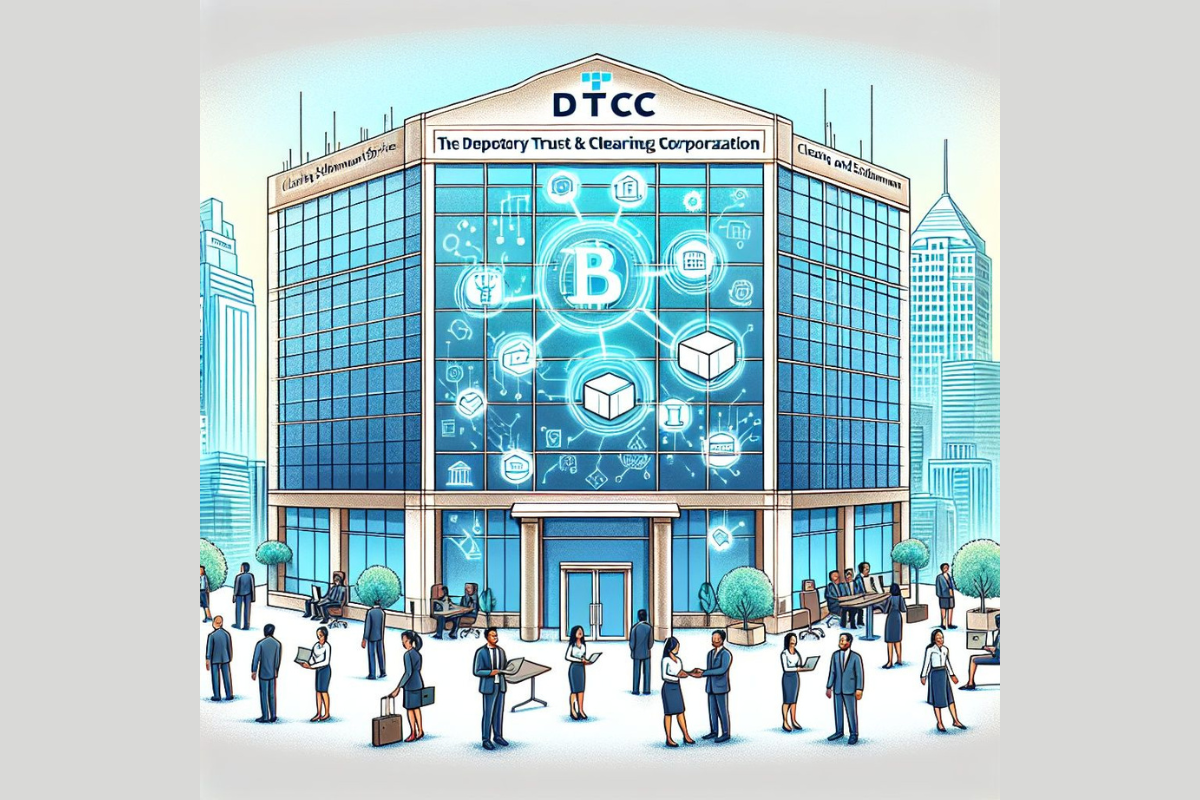
As headlines spotlight spot Bitcoin (BTC) exchange-traded fund (ETF) flows and institutions revealing their exposure to BTC ETFs, financial service infrastructure providers are quietly integrating blockchain technology into their systems.
According to a recent report from the Depository Trust & Clearing Corporation (DTCC), the firm conducted a pilot program named Smart NAV in collaboration with Chainlink (LINK). This initiative aimed to extend the capabilities of DTCC’s Mutual Fund Profile Service I (MFPS I), the industry standard for transmitting ‘Price and Rate’ data, also known as ‘NAV data.’
DTCC’s Mutual Fund Services business currently operates MFPS I, offering fund companies an automated solution to deliver prices and daily distribution rates to numerous clients for tens of thousands of mutual fund securities. Traditionally, DTCC collects price and rate data from funds/service providers and distributors, then aggregates and disseminates it at regular intervals through its message queue (MQ) and file-based methods.
The Smart NAV Pilot served as a digital extension of the existing MFPS I service, aiming to broaden and complement its current capabilities. DTCC recognized the growing interest in mutual fund tokenization and saw an opportunity for on-chain price and rate data to facilitate new initiatives. Taking a ‘chain-agnostic’ approach, meaning the ability to disseminate NAV data across virtually any blockchain, was crucial for enabling other use cases to build upon Smart NAV’s foundations.
Ten market participants, including major names like American Century Investments, BNY Mellon, and JP Morgan, collaborated with DTCC and Chainlink on the pilot. They evaluated the feasibility and industry value of implementing a distributed ledger technology (DLT)-based price and rate dissemination solution to unlock new benefits and support experimentation in the asset management space.
The pilot results demonstrated that delivering structured data on-chain and establishing standard roles and processes enabled foundational data to be integrated into various on-chain use cases, such as tokenized funds and bulk consumer smart contracts. This capability can fuel future industry exploration and empower numerous downstream use cases, including brokerage portfolio applications.
The simplest application of Smart NAV is to provide trusted, verifiable data on virtually any blockchain network to support its use in business workflows. During the pilot, DTCC acted as both the provider and governor of the on-chain data solution, while Chainlink’s CCIP served as the interoperability layer. The core capability explored is adaptable across a wide range of use cases, potentially enhancing operational efficiency and streamlining processes.
Based on the positive findings, DTCC sees an opportunity to expand the scope of the pilot to explore broader use cases beyond price and rate data dissemination and across more blockchains.
Source: kitco.com
The post DTCC partners with Chainlink and JPMorgan to pilot blockchain integration for fund data appeared first on HIPTHER Alerts.
Blockchain
Is Donald Trump’s Recent Crypto-Friendly Stance Genuine Or Opportunistic? Experts Weigh In

Presidential candidate Donald Trump recently made a surprising endorsement of crypto, suggesting that he would ease hostility towards cryptocurrencies in the US if re-elected.
Trump stated, “If we’re going to embrace it, we have to let them be,” and urged crypto supporters to vote for him. This marks a significant shift from his previous criticisms of Bitcoin and other cryptocurrencies in 2019, where he labeled them as “not money” due to their volatility and lack of intrinsic value, expressing concerns about their potential use in illegal activities like drug trafficking.
Crypto’s Impact on Voter Preferences
With approximately 20% of American adults reportedly holding crypto, candidates are taking notice. Markus Levin of XYO Network sees embracing crypto and implementing solid regulation as a strategic move in elections and sound policy overall. He believes Trump’s apparent positive stance towards the industry will sway some voters in his favor.
Jonathan Thomas of Blueberry suggests that Trump’s crypto-friendly rhetoric may attract voters who prioritize crypto as a single-issue matter.
Skepticism Surrounding Trump’s Crypto Support
However, not everyone is convinced by Trump’s newfound endorsement of crypto. NFT enthusiast Thorne Melcher views it as “flimsy” and warns against the potential for conservative politics to restrict crypto due to its use in areas such as trans hormone replacement therapy and abortions.
While some may see Trump’s support for crypto as a reason to vote for him, others like Stephanie Vaughan of Veda caution against assuming substantial benefits from this endorsement alone. Vaughan highlights the Biden Administration’s hardline stance on crypto regulation by enforcement, which she believes is unworkable and could push voters towards Trump.
Trump’s Strategy to Attract Crypto Voters
Trump’s pivot from crypto skeptic to NFT enthusiast reflects a strategic move to appeal to voters interested in crypto. Vaughan suggests that many crypto-focused voters may have supported Biden in the last election, but Trump is actively courting them by recognizing the industry’s significance.
By acknowledging crypto’s growing influence on voters, Trump aims to draw support away from Biden, positioning himself as the candidate more aligned with the interests of the crypto community.
Source: cryptonews.com
The post Is Donald Trump’s Recent Crypto-Friendly Stance Genuine Or Opportunistic? Experts Weigh In appeared first on HIPTHER Alerts.
Blockchain
droppGroup Unveils Platform with AI-Blockchain Integration
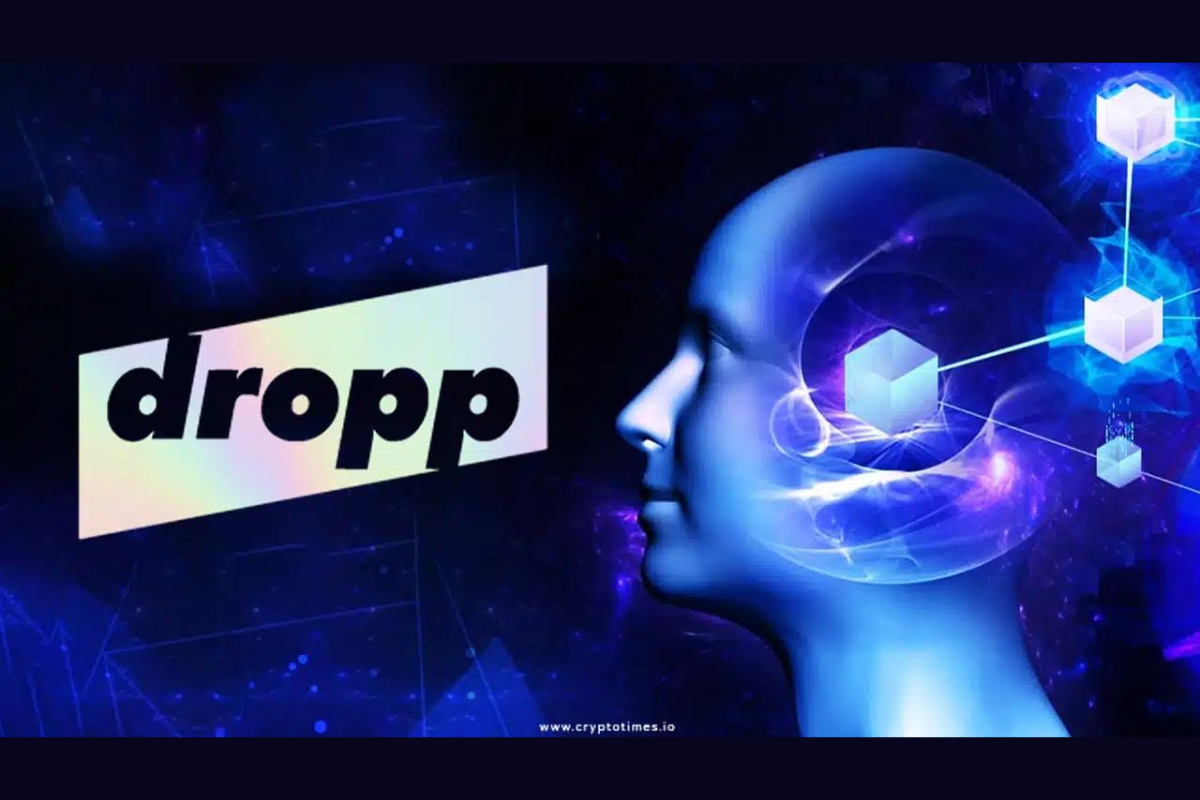
droppGroup, a trailblazer in amalgamating blockchain and artificial intelligence, has unveiled droppLink, an innovative service platform poised to potentially revolutionize AI management and development across various blockchains. The architecture of droppLink empowers users with control over data contributions, abstracts computational requirements, and streamlines micropayments.
Stakeholders, dubbed Computational Resource Patrons (CRPs), contribute to the infrastructure costs and share profits from the facilitated AI operations.
As a web3 development firm, droppGroup specializes in deploying patented innovations in AI, machine learning (ML), object recognition, streaming, crypto, augmented reality (AR), virtual reality (VR), and mixed reality (MR). droppGroup is now advancing multi-modal AI systems with droppLink.
Gurps Rai, co-founder and CEO of droppGroup, explains that droppLink tokenizes each stage in an AI model’s lifecycle across multiple blockchains, such as Solana, Polygon, Ethereum, Base, and Hyperledger Fabric 2.5, ensuring unparalleled data integrity and expediting AI development.
Rai added, “This process upholds data ownership rights while establishing a transparent, immutable usage record via our Proof of Gen and Data Genesis protocols.”
Christopher J. Kelly, co-founder and president of droppGroup, underscores the company’s commitment to pushing the boundaries of multi-modal AI systems at the convergence of physical and digital realms, introducing cutting-edge solutions to the market.
Scheduled to speak on the monitoring and evaluation panel at the AWS Summit on May 22, Kelly will address topics like data integrity in AI and its alignment with the company’s mission.
With the AI market projected to reach $297 billion by 2027, ethical considerations such as data provenance, intellectual property protection, and fair compensation are paramount.
Accessible through droppPhygital, droppLink leverages multi-chain integration and robust tokenization to bolster data integrity. By melding blockchain technology with artificial intelligence, droppLink establishes an ethical management layer, aiming to reshape the AI landscape by fostering trust, transparency, and innovation.
Source: cryptotimes.io
The post droppGroup Unveils Platform with AI-Blockchain Integration appeared first on HIPTHER Alerts.
-

 Blockchain Press Releases4 days ago
Blockchain Press Releases4 days agoSwaps Launches Innovative Payment Links for Crypto and Fiat Transactions
-

 Blockchain3 days ago
Blockchain3 days agoOKX Announces Support for New USDC Spot Trading Pairs
-

 Blockchain Press Releases4 days ago
Blockchain Press Releases4 days agoBybit’s Ethereum Euphoria: Predict Market Movements for the ETH ETF and Win
-

 Blockchain6 days ago
Blockchain6 days agoRevoluGROUP Canada Inc. Announces Leave of Absence for Chairman Bernard Lonis
-

 Blockchain Press Releases3 days ago
Blockchain Press Releases3 days agoBybit Enhances Crypto Spending with Easy 2% Cashback Rewards
-

 Blockchain Press Releases4 days ago
Blockchain Press Releases4 days agoOKX, Circle, and Bitrue Among Sponsors of Consensus 2024
-

 Blockchain Press Releases4 days ago
Blockchain Press Releases4 days agoBitget Wallet Unveils Bitget Onchain Layer, Rolls Out $10M BWB Ecosystem Fund
-

 Blockchain4 days ago
Blockchain4 days agoAtleta Network launches blockchain solution designed for sports sector






